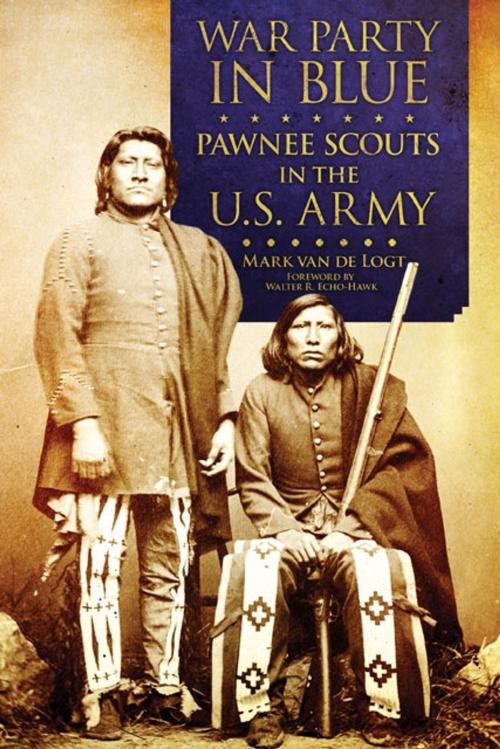War Party in Blue
Pawnee Scouts in the U.S. Army
Nonfiction, Social & Cultural Studies, Social Science, Cultural Studies, Native American Studies, History, Americas, Native American, Military, United States| Author: | Mark van de Logt | ISBN: | 9780806184418 |
| Publisher: | University of Oklahoma Press | Publication: | December 6, 2011 |
| Imprint: | University of Oklahoma Press | Language: | English |
| Author: | Mark van de Logt |
| ISBN: | 9780806184418 |
| Publisher: | University of Oklahoma Press |
| Publication: | December 6, 2011 |
| Imprint: | University of Oklahoma Press |
| Language: | English |
Between 1864 and 1877, during the height of the Plains Indian wars, Pawnee Indian scouts rendered invaluable service to the United States Army. They led missions deep into contested territory, tracked resisting bands, spearheaded attacks against enemy camps, and on more than one occasion saved American troops from disaster on the field of battle. In War Party in Blue, Mark van de Logt tells the story of the Pawnee scouts from their perspective, detailing the battles in which they served and recounting hitherto neglected episodes.
Employing military records, archival sources, and contemporary interviews with current Pawnee tribal members—some of them descendants of the scouts—Van de Logt presents the Pawnee scouts as central players in some of the army's most notable campaigns. He argues that military service allowed the Pawnees to fight their tribal enemies with weapons furnished by the United States as well as to resist pressures from the federal government to assimilate them into white society.
According to the author, it was the tribe's martial traditions, deeply embedded in their culture, that made them successful and allowed them to retain these time-honored traditions. The Pawnee style of warfare, based on stealth and surprise, was so effective that the scouts' commanding officers did little to discourage their methods. Although the scouts proudly wore the blue uniform of the U.S. Cavalry, they never ceased to be Pawnees. The Pawnee Battalion was truly a war party in blue.
Between 1864 and 1877, during the height of the Plains Indian wars, Pawnee Indian scouts rendered invaluable service to the United States Army. They led missions deep into contested territory, tracked resisting bands, spearheaded attacks against enemy camps, and on more than one occasion saved American troops from disaster on the field of battle. In War Party in Blue, Mark van de Logt tells the story of the Pawnee scouts from their perspective, detailing the battles in which they served and recounting hitherto neglected episodes.
Employing military records, archival sources, and contemporary interviews with current Pawnee tribal members—some of them descendants of the scouts—Van de Logt presents the Pawnee scouts as central players in some of the army's most notable campaigns. He argues that military service allowed the Pawnees to fight their tribal enemies with weapons furnished by the United States as well as to resist pressures from the federal government to assimilate them into white society.
According to the author, it was the tribe's martial traditions, deeply embedded in their culture, that made them successful and allowed them to retain these time-honored traditions. The Pawnee style of warfare, based on stealth and surprise, was so effective that the scouts' commanding officers did little to discourage their methods. Although the scouts proudly wore the blue uniform of the U.S. Cavalry, they never ceased to be Pawnees. The Pawnee Battalion was truly a war party in blue.















